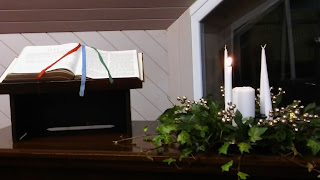Season's Readings

I was born at Christmas time. I think that's why I like winter and Christmas so much. Right now, I am working on a winter fantasy I have been trying to write on and off for years, in which the ghosts of the Wolf Tribe ride on Christmas Eve. I expect all of us book lovers have books we like to read again and again at this time of year. It's lovely to snuggle up on the sofa with a hot chocolate and the Christmas lights on, enjoying a magical read. At the moment, I'm reading The Toy Makers by Robert Dinsdale, about a magical toy emporium that opens each year with the first snow of winter. I bought the book in summer, and it seemed weird and wrong. Re-reading it in December is just perfect. But I also have some regular favourites: The Box of Delights by John Masefield. Both the book and the 1980s TV series always thrill me, when I hear the words: "The wolves are running." (Ooh, do I spot an influence? I hear you say.) The Christmas Mystery by Jostein Gaarder, ab...







